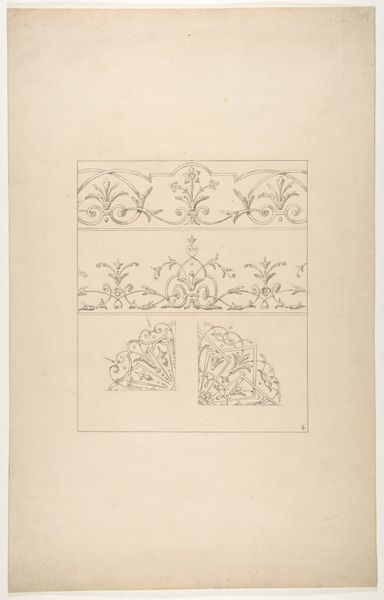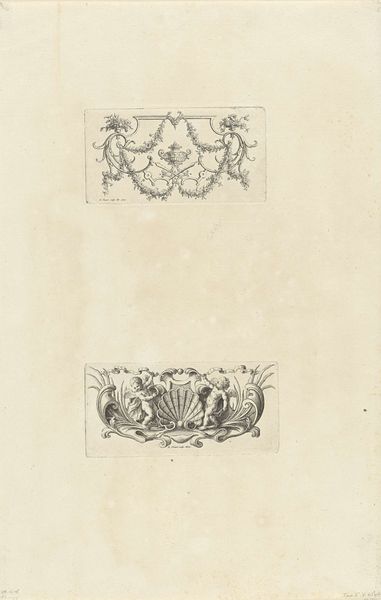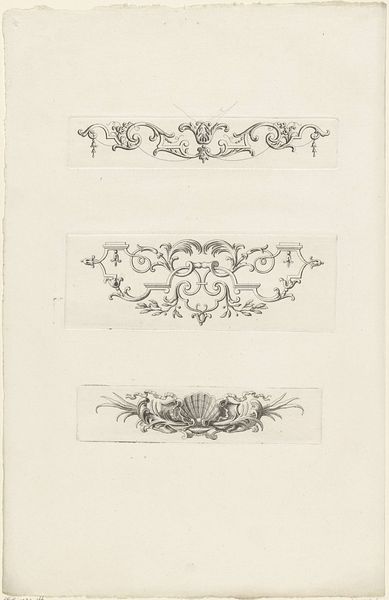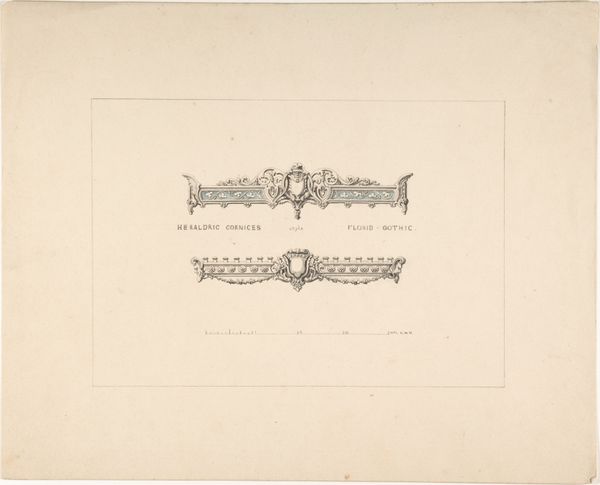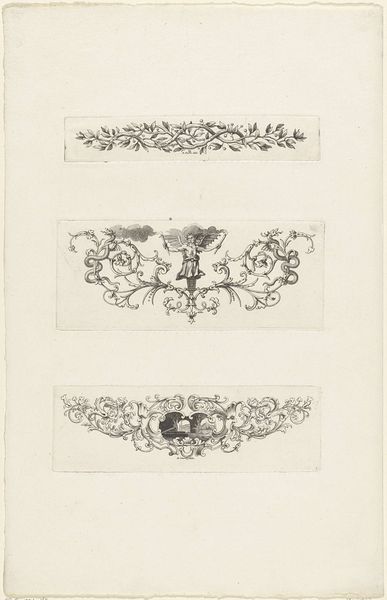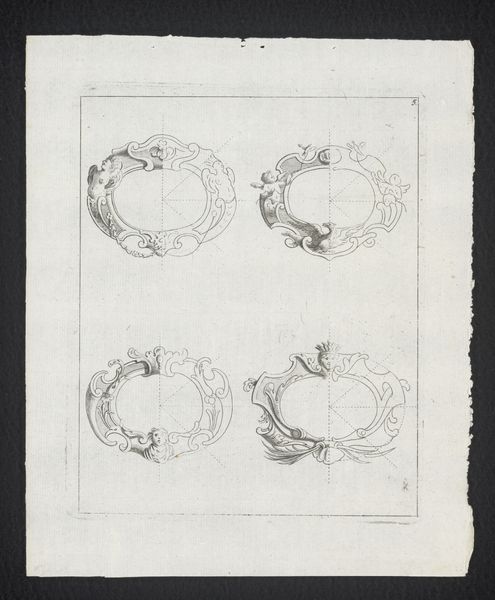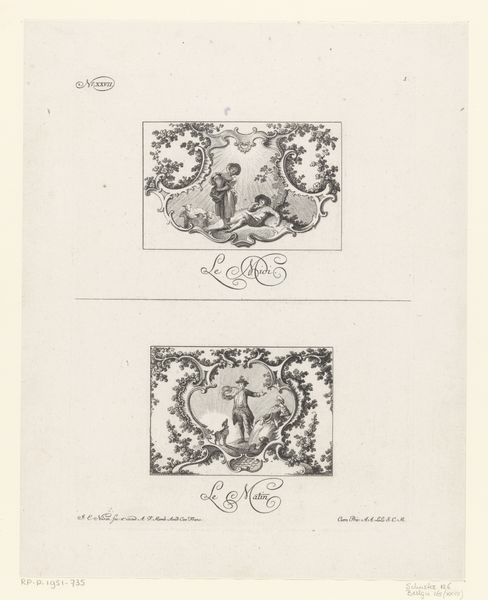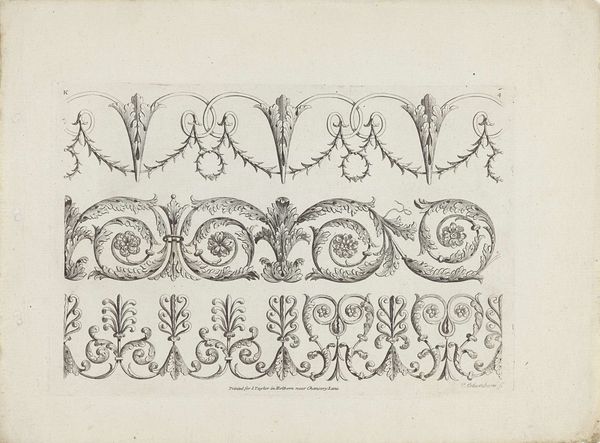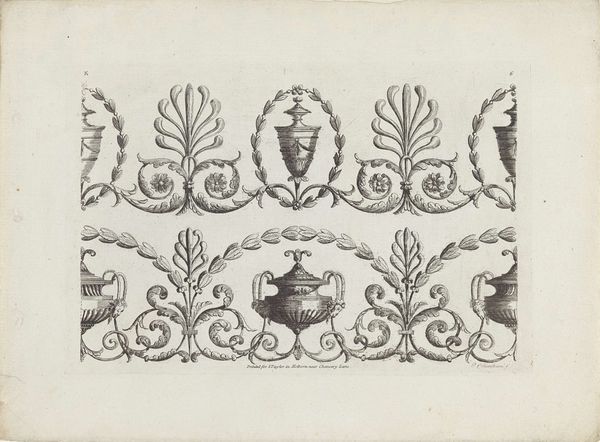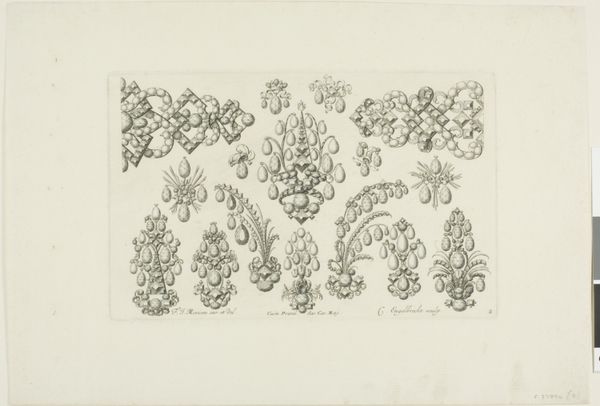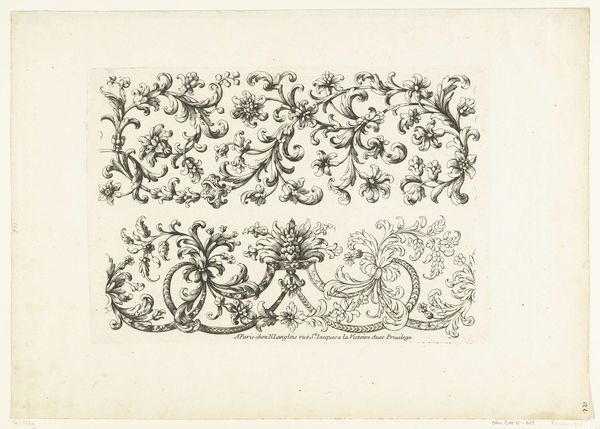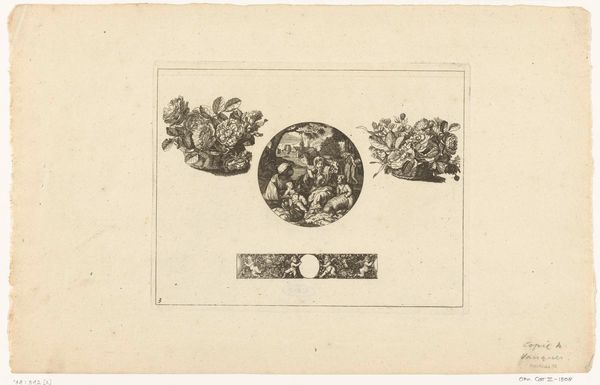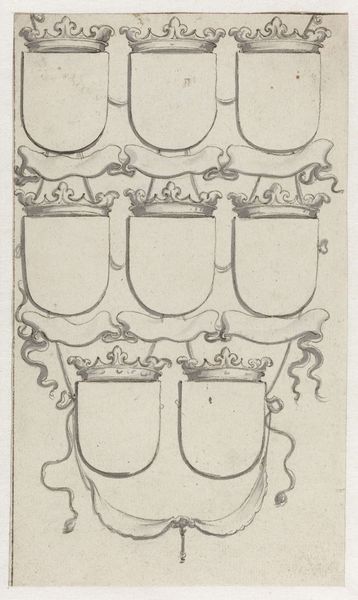
Dimensions: height 220 mm, width 201 mm
Copyright: Rijks Museum: Open Domain
Editor: So, this print is called "Ontwerpen voor huwelijksaankondigingen," or "Designs for Wedding Announcements," made by Jacob Schwartzenbach around 1798. It's comprised of different styles of decorative frames. What I find fascinating is how varied the symbolism is even within a single sheet of templates. What strikes you when you look at it? Curator: Well, considering its social function, and the socio-political climate, I find myself wondering about the intended audience and how these images played into societal expectations of marriage during that period. Notice how the imagery varies – from the classical putti to more somber skulls. What do these different motifs suggest about the evolving understanding of marriage itself? Editor: That's a good point, the contrast is hard to miss! How would these announcement designs be viewed considering the French Revolution, only a decade before, and how would this influence ideas on love and tradition? Curator: Exactly! Think about how print culture was flourishing and these engravings were helping spread not only wedding news, but ideologies too. Were they intentionally trying to promote certain societal structures through these designs? Are there hidden messages beyond mere aesthetics? What do the skeletal figures communicate alongside the cherubic ones? Editor: It's interesting to think of these wedding announcements not just as practical objects but also as carriers of social and political messages. Curator: Precisely. The "politics of imagery" isn’t limited to grand history paintings. Even these small, personal designs contribute to the broader visual landscape and its influence on cultural values. Editor: I will certainly never look at wedding stationery the same way! Thanks for opening my eyes to the history embedded in such seemingly simple prints.
Comments
No comments
Be the first to comment and join the conversation on the ultimate creative platform.

